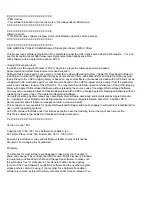
Technical Manual
U-SYS MRS6100 Media Resource Server
Chapter 1 System Overview
Huawei Technologies Proprietary
1-5
z
Open protocols
The MRS supports the following open protocols:
1) MGCP
2) SIP
3) Real-time transport protocol/RTP control protocol (RTP/RTCP)
4) Session description protocol (SDP)
5) Voice extensible markup language (VoiceXML or VXML) protocol, HTTP,
FTP, NFS and TCP/IP.
z
The standard NMS interface is the man-machine language (MML) interface.
II. Large capacity and high integrity
z
The MRS6100 supports up to 7200 voice channels to ensure smooth expansion.
z
The MRS6100 supports up to 5,184,000 Busy Hour Call Attempts (BHCA).
z
The MRS6100 uses standard frame, which is 9 U high, and 19 inches wide. This
ensures high integrity of the system.
III. High reliability design
The MRS6100 has the following reliability features:
z
Supports redundancy design on the hardware and software.
For example, the MCCU and the SMUI use the “1+1” backup mode to ensure
high reliability of the devices.
z
Provides auto-detection for faults and self-healing capability.
The MRS6100 can detect its hardware and software for faults automatically. if the
hardware or software is faulty, the MRS6100 reports alarms automatically. The
system then switches from the primary server to the secondary server to remove
the fault. If the fault cannot be removed, the system resets automatically for
recovery.
z
Provide perfect protection functions against exceptions, including:
1) System power cut protection
2) System power switch protection against misoperation
3) Lightning protection for system power supply,
4) Overvoltage and undervoltage protection
5) Short circuit protection,
6) Overcurrent and overvoltage protection for power supply and interfaces
7) Internal temperature regulation and protection for power supply.
8) The system is protected when it receives any exceptional packet.
z
Ensure data security
You can back up the system-class critical data to your hard disk or CDs,
including:
1) Device running parameters that you configure
2) Statistical
information
3) Operator
information















































